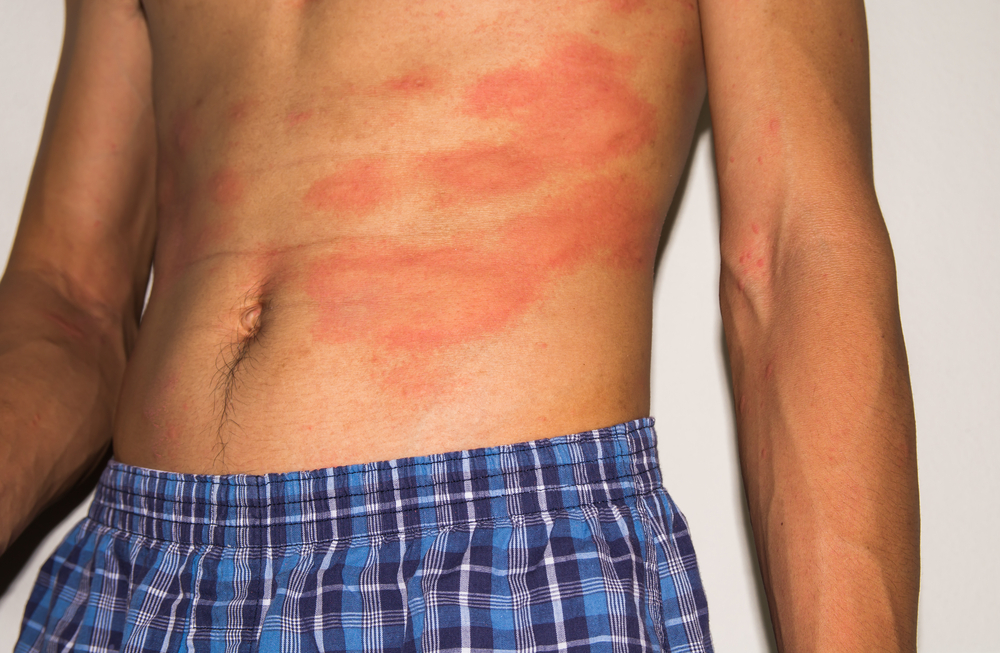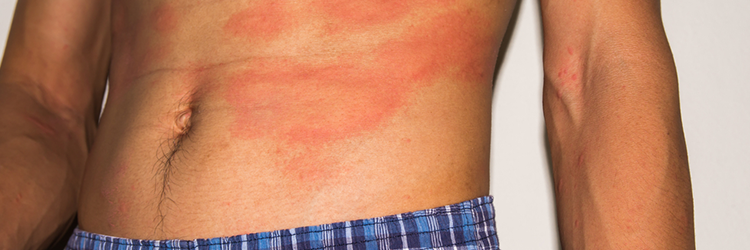
Different types of red rash
There are several different types of red rash, each with its own distinct set of causes, symptoms and treatment methods. Let us take a look at some of the most common types of red rash:
-
Eczema:
Also known as atopic dermatitis, eczema is a red, dry, itchy skin rash that mostly affects children up to 5 years of age. Although it tends to improve over time, it may last till adulthood. It is caused because the water tight barrier in between the skin cells weakens; allowing the moisture to go out and other substances get in. That is why the best treatment for eczema is to keep the skin moisturized. Common symptoms of the condition include blisters with crusting and oozing, ear bleeding or discharge, colour changes in the skin, skin inflammation and redness around the blisters, etc.
-
Contact dermatitis:
This red rash is the result of an allergy which commonly occurs when the skin contacts an allergen, which may be anything from a cream or soap to a pet or fabric. Some common allergens are poison ivy and poison oak, which are allergic chemicals produced from certain plant leaves. Most allergic reactions disappear within a few hours or days, but if the allergy persists, it becomes important to contact a physician. He will prescribe some medicines that will tone down your skin’s immune reaction, and ease the symptoms. Symptoms of contact dermatitis include red bumps that feel tender and warm, crust, drain, or ooze, become raw, scaly, or thickened, or form fluid filled blisters.
-
Drug rash:
This red rash occurs when your body reacts to a drug or develops an allergic reaction to it. While you may be allergic to almost any drug, common culprits include anti-seizure drugs, antibiotics, and diuretics. The drug rash starts after around 7 days of taking the medicine, and appears as discrete red spots covering huge body areas. This rash tends to resolve on its own when you discontinue taking the medicine. Severe reactions may be serious if they affect your organs or the respiratory system.
-
Shingles:
This condition is caused by the varicella zoster virus, the chickenpox virus that remains dormant in a person’s body after the disease. Sometimes, it gets reactivated to cause shingles. An outbreak may start with itching, pain and uncomfortable sensations without any obvious reasons. Clusters of blisters may appear in some parts of the body, which break, dry, and crust within a few days. Antiviral drugs may be prescribed to reduce pain. Shingles vaccine is available for people over 60 years of age.
Your skin protects your body, and acts as your first defence against chemicals and germs. So, it is important to take care of your skin and give it due attention.














